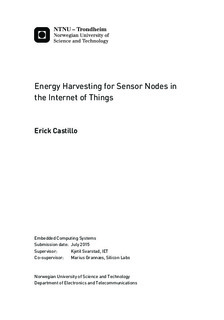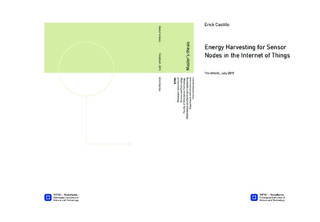| dc.description.abstract | Wireless sensor networks have an extensive range of applications in the real world.
From military uses saving lives, to environmental applications monitoring the fauna
and weather conditions, but also by checking the health of patients and even by automating
our homes. This work presents a solution to implement an energy harvesting
sensor network. By using solar energy to power a sensor node we can extend its lifetime
beyond the one powered only by batteries. Moreover, this solution attempts to be
energy efficient and to achieve a communication scheme in order to create a sensor
network where nodes read environmental data and transmit back to a sink node. The
communication scheme was successful to synchronize two nodes and transmit packets
between them without collisions and avoiding loss of data due to lack of energy.
Furthermore, the duty cycling algorithm allowed the node to operate at its maximum
performance level, making the best use of its energy available without depleting it. | |

